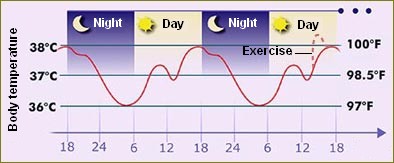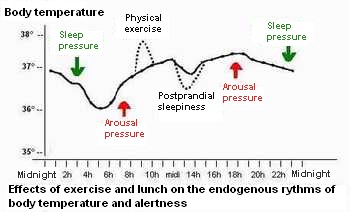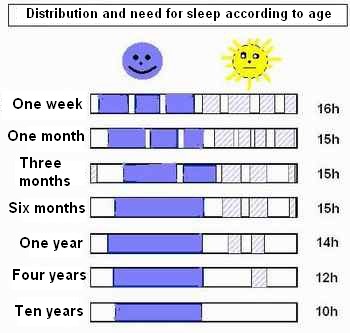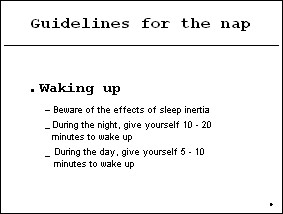Home > Welcome > Sleep-wake pathologies > Know how to sleep > The nap > Complete sheet
Complete sheet
"It is a fact that the nap makes life easier for those who regularly have one, because it simply rests them, or, I can witness for it, because it gives them the extraordinary channels of intellectual efficiency of the night".
Thursday 20 December 2007
All the versions of this article: [English] [français] [svenska]
Caution, like all powerful medications, the nap also has contra-indications and unwanted side effects. Please read the leaflet carefully.
|
The "DiDal pro-Smg" dictionnary is DocDodo’s imaginary book which would provide health professionals with complete, official and up-to-date information about "somnications".
If that book existed, the characteristics and user’s manual for the other validated "somnications" which are Light, Heat, Pleasure and Food, could be found in it, next to the Nap’s.
(Sport is thus a combination of somnications because it influences sleep with the joint effect of at least two or three somnications).
NAP: SCP (Summary of the Product’s Characteristics : "SOMNICATION")
- FORM AND PRESENTATION :
Deliberate sleep episode which rather occurs in the start of the afternoon, physiologically propitious moment for falling asleep (related to the cyclic fall of the body temperature).
The nap is normally made of light slow wave sleep (stages 1 and 2). The transition into REM sleep (memory of dreams, sheet folds printed on the skin, (for men) waking up with an erection) during the nap is considered to be pathological (Cf. dosage and precautions for use).

- USES :
The nap is recommended in the curative or preventive treatment of excessive daytime sleepiness.
- Curative nap :
- in order to compensate a sleep lack due to voluntary deprivation or very early rise (night or shift work);
- in order to compensate an increased need for sleep in every acute (infectious, metabolic or degenerative) illness;
- as a treatment of some parasomnias in the child (bedwetting, nocturnal terrors, sleepwalking), by diminishing deep slow wave sleep during the night. - Preventive nap :
- building up a sleep credit in shift or night workers;
- sleep hygiene in narcolepsy and idiopathic hypersomnia. - Physiological nap :
- pregnancy;
- child under 6 years;
- (old people : see below).

- "must be suggested before eight years"
- Curative nap :
- DOSAGE:
Rhythm and duration of the nap follow a variable need for sleep according to each individual (evening or morning person, short or long sleeper, flexible or rigid) and their way of life.
As a general rule, the nap must remain short and suit circumstances.
- Curative nap : from 20 to 40 minutes at the most (in the start of the afternoon).
A longer duration would allow REM sleep (its latency is of more than 40 minutes) and may induce deep disturbances of sleep the following night(s). - Preventive nap : to the full in order to build up a sleep credit before starting one’s job at night, extended car driving, solitary sailing, and so on.).
- Curative nap : from 20 to 40 minutes at the most (in the start of the afternoon).
- WAY OF ADMINISTRATION :
To be had in the start of the afternoon, rather in a lying position, in a dark, quiet and silent place.
The nap must occur during the ascending phase of the body temperature, which occurs after 1 p.m.
- CONTRA-INDICATIONS :
Absolute contra-indications :
Insomnia : the nap exerts a powerful anti-sleep effect on the insomniac person’s nights (but it is the best moment to devote oneself to practice relaxation).
Delayed phase syndrome : the nap worsens the evening sleep onset delay.Relative contra-indications :
- Old person :
Inactivity or too extended naps can favour insomnia in old people. The untimely use of sleeping pills increases daytime sleepiness, especially at that age, and leads to a dramatic vicious circle (in France, the great majority of old people takes one or more sedative medications). - Fibromyalgia :
The gradual resumption and maintenance of an arousing, soft but regular physical activity is a part of the caretaking of tiredness and hypo-sleep syndromes (even though the sick person has the feeling he/she should rather rest).It is, to the contrary, much better to limitate the risk of daytime sleep as much as possible in these cases where the complaint is about tiredness rather than sleepiness.
The caretaking of fibromyalgia relies on choosing cognitive and behavioural ways outlines which are resolutely turned toward arousal. The postprandial period of sleepiness is thus a good moment to bring oneself to taking a very hot bath.
- Child above 8 years or very short sleeping child :
The need for sleep varies as much from one child to the other as in adults. Some children have no more naps since 2 or 3 years of age, and it is useless or even toxic to force them to sleep (negative conditioning around sleep and risk of insomnia in adulthood).(NB: Children until 6 or 7 years should be given the opportunity to sleep in the afternoon. For those who will not fall asleep or for the older ones, that period should be reserved for free relaxing activities because it is the least propitious for lasting intellectual activities. Clearly, the afternoon should not start with studying difficult subjects.
After 7-8 years, the nap is suspect and should lead to ask for a medical opinion.
- Teenage:
The need for a nap reappears during adolescence. It has to be made out from the week-end «sleep-over» which, of course, allow to compensate a lack of sleep built up during the week, at that age, but it sometimes plays an aggravating part in phase delay syndromes. Three factors add themselves up to induce an insomnia on Sunday evenings, and the week starts again with a big lack of sleep. - Depression :
The nap sometimes has an aggravating effect in the sick person with a depressive tendency. A chart of excessive daytime sleepiness with morning insomnia can draw the attention on a true depression. The sleep disorder is, here, secondary to the mood disorder and their enhancement will be a predictive marker of the efficiency of the antidepressant medication.
In some modern psychiatry units, people who suffer from serious depression are treated by a sleep deprivation of one night in four. The sleepless night has a stimulating effect on these tired sick people.
- Old person :
- FOREWARNING AND CAUTION FOR USE :
Forewarning:
The curative nap risks to make a dent into the sleep capital of the next night and induce a sleep onset delay with difficulties to wake up at a programmed time in the morning (with building up a sleep debt from the start of the week).
In the child, a too long nap delays sleep onset in the evenings (sleep diary). The persistence of the nap over 10 years of age or its unexplaind reappearance in the adult must lead to a sleep exploration.
Precautions for use :
Respect the indications and contra-indications so that a possible sleep disorder is not concealed (sleep apnea syndrome, periodic limb movements, narcolepsy and so on.) - INTERACTIONS WITH OTHER MEDICATIONS :
The intake of sedatives in the evening increases pathological daytime sleepiness and favours, that way, a sleep onset insomnia for the following days, making a start point for the vicious circle of insomnia.
In case of occasional intake, alcohol increases the risks linked to a pathological sleepiness. In a chronic alcoholic, though, alcohol counters the efficiency of the sleeping pills.
As a general rule, too heavy meals should be avoided before going to sleep, but hunger favours the synthesis of an arousing hormone and it is good not to go to sleep with an empty stomach.
Coffee and tea conceal the sensation of sleepiness of the start of the afternoon and may counter the short naps which are a compensation mechanism of a sleep debt. (They are not recommended to solitary navigators, for example). - PREGNANCY AND BREAST FEEDING :
The nap is strongly indicated from the start of pregnancy (physiological hypersomnia).
The woman who feeds a baby has to learn to manage well the nocturnal arousals of the first months with naps synchronized with the baby’s. That knowledge of the virtues of the nap is precious before the settlement of the baby’s day-night rhythm. - UNWANTED SIDE EFFECTS :
Insomnias. Phase delay (see forewarning)
Possible confusion if woken brutally in slow wave sleep : Elpenor syndrome (named after Ulysses’ companion who killed himself during a confusion at arousal). The occurrence of an arousal from a deep slow wave sleep phase can induce dangerous sleepwalking behaviours (driving the opposite direction on the motorway, jumping from a window...).
Nb: the presence of confusional arousals must draw the attention on a possible idiopathic hypersomnia. During long haul flights, pilots are allowed to have naps provided they take precautions for when they wake up (light therapy lamps).
During long haul flights, pilots are allowed to have naps provided they take precautions for when they wake up (light therapy lamps). - EFFECT ON DRIVING A CAR :
Studies show that a 15 minutes break allowing a couple of minutes of sleep every two hours allows to restore a perfect level of vigilance in very long distance drivers.
On the other hand, it is dangerous to drive a vehicle during the periods of daytime sleepiness (between 2 and 5 p.m.), especially for a subject who is sleep deprived or used to have naps regularly (Cf. dependency). -
OVERDOSAGE:
- Appearance of insomnia and hyposleep, excessive daytime sleepiness and chronic fatigue.
- Dependency : the nap is written in the biological rhythm to allow the adaptation of the organism to the constraints of nocturnal sleep deprivations, but it is also a life habit which can obey a cultural or circumstantial conditioning. In Spain, the government tries to change that habit which is not conform to the requirements of globalization. - PHARMACODYNAMICS:
Anti-sleepiness (N : nervous system)
The nap has an arousing, non amphetaminic, vigilance enhancing effect. It counters the fall of cognitive (particularly mnesic), psychomotor and neurosensitive performances induced by experimental sleep deprivation.
In superior apes, only 10% individuals have naps spontaneouly.
In modern man, the nap is a need felt by 25 to 50% of the population but only a small part is in the situation to have some.
The occurrence of the nap (in some periods of the 24 hours of the day) responds to the command of a biological clock (Cf. circadian rhythm of vigilance) but it only appears in man in the situation of nocturnal sleep deprivation.
It is traditionally the case in warm countries where it is more pleasant to go to bed late in order to benefit of the fresher hours.
It is also the case for night workers or extremely early morning workers (bakers, dustmen, cleaning people...) - PHARMACOKINETICS:
The nap must imperatively be had during the physiological period of least vigilance which matches a fall of the body temperature.
That gate, propitious to the occurrence of (restful) slow wave sleep is located in the start of the afternoon (between 1 and 3.30 p.m.).
The appearance of sleepiness follows the rhythm of body temperature, melatonin and cortisol.
Be careful, sleepiness in the start of the afternoon is not linked to lunch and also occurs with an empty stomach. - WARNING:
1°) The occurrence of sleep in the ascending phase of body temperature ("sleep over" or late nap) favours the appearance of REM sleep during the day and risks to upset the biological clocks.
2°) Prolonging the nap beyond 20 minutes exposes the adult to the risk of insomnia.

- Colette dort autant que son chat.
LISTE II
- Selling authorization : Three to six million years ago.
- Price : Free; "The nap is a pleasure that costs nothing"
- Paid back : 100%
- Suited for collectivities.
Read the "general public leaflet" in the "Didal-smg"

- More information...
- Scientific references by Dr Françoise Delormas (Director of ProSom), "The nap for all"
- See the sheet about the nap on the website "sleep and vigilance"
